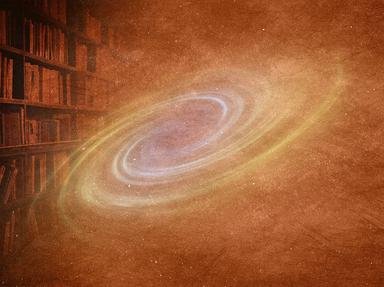Quiz Answer Key and Fun Facts
1. Ancient cosmology was dominated by a geocentric model of the universe, that is, that the sun and other planets orbited a stationary earth. One of the most influential works of astronomy promoting geocentrism was "The Almagest," a treatise detailing the apparent motions of the stars and planets, written by which second century Greek polymath?
2. Copernicus revolutionised cosmology in the fourteenth century by publishing the heliocentric theory, which proposed the then radical notion that the earth orbits the sun. Unfortunately, like astronomers before him, Copernicus made the crucial error of assuming that the planets have perfectly circular orbits. Which astronomer later showed that the planets have elliptical orbits and formulated the laws of planetary motion?
3. Galileo, who has been acclaimed as the "father of modern science", was famously forced to recant the heliocentric theory by the Church on pain of death in 1616. When did the Roman Catholic Church formally admit its error in forcing Galileo to recant his astronomical theories?
4. Most people take it for granted that the night sky is dark, but this simple fact posed a serious problem for cosmology that took centuries to resolve. The problem is that if the universe is infinite, eternal, and static, as was widely believed, then the light from distant stars should completely fill the sky with light, yet it clearly does not. How is this conundrum commonly known?
5. Although it has long been known that light has wave-like properties, physicists used to be puzzled about how light waves could propagate through apparently empty space, which seemed impossible. It was therefore proposed that space was filled with what medium through which light waves moved?
6. Isaac Newton's law of universal gravitation was of key importance in the development of modern cosmology, and depends on what mathematical principle?
7. A key discovery of quantum physics was the principle of indeterminacy, that the position and velocity of a subatomic particle cannot both be measured exactly, at the same time, even in theory. Einstein, who objected to this, once said, "God does not play dice with the universe." Niels Bohr, a pioneer of quantum theory, was said to have replied to this with what statement?
8. Einstein's theory of general relativity revolutionized our understanding of the relationship between space and time. However, he made an important oversight in assuming that the universe was static (neither expanding nor contracting). To allow for a static universe, he added what variable to his equations that would act as a counterbalancing force to gravity?
9. In 1929, astronomer Edwin Hubble's observations of distant galaxies confirmed that the universe is expanding. This led to a cosmological model in which the universe originated in a highly dense, high-temperature state. Who first described this as the "Big Bang Theory" as a sort of joke?
10. In 1964, radio astronomers Arno Penzias and Robert Wilson accidentally discovered what universal phenomenon that provided crucial evidence for the Big Bang Theory?
Source: Author
agentofchaos
This quiz was reviewed by FunTrivia editor
rossian before going online.
Any errors found in FunTrivia content are routinely corrected through our feedback system.
